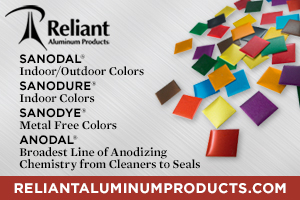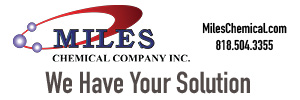Coatings have been a part of our society for over 5000 years. The use of coatings has been found in constructions older than the Hanging Gardens of Babylon and the Pyramids.
 Huzaifa MatawalaFormulations, technology, ingredients, and style of manufacturing kept changing. What did not change was the purpose, performance, and requirement of the coatings. It enhances durability, multiplies the lifespan, and increases the beauty of any surface it is applied to.
Huzaifa MatawalaFormulations, technology, ingredients, and style of manufacturing kept changing. What did not change was the purpose, performance, and requirement of the coatings. It enhances durability, multiplies the lifespan, and increases the beauty of any surface it is applied to.
The coatings industry hence provides one of the most sustainable solutions to the world, by minimizing replacement cost, time, and process. This reduces stress on fuel, water, labor, natural resources, and the environment. Thus, lesser extraction of resources, mining, polluting, and a carbon footprint.
There is a direct relationship between coatings with environmental Sustainability by their function of increasing life, enduring strength, and providing weatherability to a bridge, ship, aircraft, electronics, machinery, or a home.
Ingredients for Durability and Challenges To Manufacturers
To stay at the top of the game in providing functional and application properties, coatings underwent several formative changes and evolved over the years to meet cost and long-lasting demands. With the use of hydrocarbon and molecular engineering, it was possible to get the toughest coats. The challenge of cost and durability is solved. Until we get into the issues of biodegradability, greenhouse effects, and cradle-to-grave responsibilities.
This increased demand for coatings that were lower VOC, easy on humans and the natural habitat, and eco-friendly. Coatings' major function is to fight the ecosystem and keep its substrates safe, yet now it has to do so in a friendly manner. No Industry has ever faced two opposite impossible challenges at the same time.
With chemistry, everything is possible, and with the right ingredients, we attain replacements of ingredients and change towards a greener, healthier pathway. This way, one issue of ingredients is taken care of by the creation and modification of laws that control what goes in the paint cans. Paint became less toxic and a lot safer.
However, no matter how good and friendly coatings are with the ecosystem, they still could never become 100% biodegradable, which could defeat their purpose. Hence, management of unusable, unsalable items, and items that were created during production is our topic of discussion today. These items still need to be put to an environmentally stable solution.
Era of Abundance
This is an economic aspect of sustainability. How has the economic environment around us changed, and where has this change led us?
We are into the ‘Era Of Abundance.’ Financial times under which everything is possible. The economic era is equipped with fiat currencies, empowering unlimited access to extract natural resources and create easy lifestyles. The correlation of technology with the economy eventually affects ecology. Since, creation of currencies, if not supplemented with sufficient assets or goods, could cause heavy inflationary situations, turning the nations upside down.
Circular economy is an epic of solutions, not just fighting the carbon footprint issue, but serving as an inflation hedge, stabilizing prices, and ensuring availability in communities of need.
Challenges and Struggle
We currently land bury or fuel blend over 95% of it as paint waste, with marginal projects in place. These are two places where waste generation takes place:
From the Household and Stores
Recent developments in models of Public, Private, Association, and Government partnership play an important role, such as creating programs like Paintcare, Paintback, and Productcare.
Several transporting and recycling companies collaborate with collection centers and bring items back from the waste stream into product management.
Yet a major part of paint still ends up in fuel-burning and land burials. Since only 20% to 25% of states are covered with HHW or Independent HHW recycling programs, and the majority of solvent-based or hazmat coatings still end up in fuel blending. Steady regulation, constant decision making, and updating of the programs do help, but the generation is many times higher than containment.
From the Industries: Paint and Paint Raw-material industries
Change in formulations, acquisition-merger, liquidation, bankruptcy, change in ownership, change in brand, changes in legal requirements, natural calamities, are some exceptional reasons we have unsalable-unusable inventory. In addition to a routine stream of this unit creating off-specs, wastes, expired items, and returns on a regular basis as part of the day-to-day business.
In the majority of scenarios, the retail packs are handled as donations, auctions, or discounted price merchandise, but a majority of items still end up in land burial or fuel blending.
Circular Reuse is Waste Minimization
The circular economy diagram shows the stages of waste being generated in all stages of the process.
- Extraction/Production of Raw Materials
- Paint Production in the Factory
- Distribution/Sales (Stores)
Items are collected from these places and formulated into products for use. In addition to the advantages of circular reuse, charitable projects, donations, and certification of honor, sustainability, and corporate social responsibility create fewer fuel blending issues and smaller land burial sites.
How to Convert Waste to Reuse?
- Identify: The items that could be used need to be identified in the factory and planned to be collected in a manner of a product.
- Categorize: The important step of categorizing the identified and collected items as a product.
- Store: In order to make sure the item is no longer going out as a waste stream, the storage location should be moved alongside the usable/salable products, hence away and separate from the waste category.
- Label: These items are products to be put in re-use, hence it's usability and movement are as per product category. No labels of waste, scrap, or disposal should be used on these identified, categorized, and stored in place to be used again.
Re-Use ‘As It Is’
The final, most important step is the circular re-use "As-It-Is". We may be able to reuse and recycle almost anything without a problem. If such recycling is done without changing the form of that item. By not removing, extracting something. By not burning, or burning, or disposing. In any manner where every component/properties of the items are used for its actual original way "As-It-Is". Then not only is such a reuse termed as circular economy, but the item/ingredient moves as a product and not as a waste.
This 4-stage important implementation not just changes the destiny of that waste stream into items of use, but also its definition into a product category.
Glimpse of US 40 CFR, Exception to the rule
Furthermore, the reference to our above four stages with the EPA's 40CFR categorically emphasizes:
- Is the HSM used directly as an ingredient in an industrial process or as an effective substitute for a commercial product (i.e., use/reuse)? If YES, then the HSM is not a solid waste per 40 CFR 261.2(e) If NO, continue to 14.
- Is the HSM processed to reclaim a useful product, and is the HSM either a commercial chemical product, a characteristic byproduct, or a characteristic sludge? If YES, then the HSM is not a solid waste per 40 CFR 261.2(c)(3).
Raw Materials, Finished Goods, Wash Solvents, Expired Inventories, And Surpluses
A list of items that could be reused:
- Off specs
- Machine wash
- Latex binders
- Customer returns
- Incomplete batches
- Sweep Materials
- Brand changes
- Batch Failures
- Mis-tints
- Industrial waste
- Gel Materials
- Expired inventory
- Solvent waste
- Alkyd wash
- Tank wash
- Washed waters
- Pigments and additive industry items
- Closeouts
- Takeover or Merger inventory issues
- Hi-acid value/color variations
- All types of non-saleable, non-usable
Items after receiving are:
- Sorted: Products are sorted by their solvent and resin grouping category, their density, compatibility, color, sheen, and viscosity.
- Bulked: Homogeneous, sorted items are bulked into 1000 liter IBC totes to be further used in batches of production.
- Used: These items are used as needed in batches of production up to 30% to 80% with other chemicals.
All items finally created are then sold in markets for their use. These items are competitive and fetch a positive value. All products have a utility and purpose.
EPA Promotes and Likes Recycling Concept More Than Land Burial, Fuel Blending
- An EPA link that encourages the Donation of waste into the circular economy: https://www.epa.gov/recycle/reducing-and-reusing-basics
- Charity Guidelines: https://www.consumer.ftc.gov/articles/0074-giving-charity
It is recycling even when you give it, recycling transporters for land burial, but it is dumping waste into the ground. Confirming, but postponing the damage.
It is recycled if the solid and liquid waste is used as fuel with burning credits. But the pigments, resins, and important solvent functions are not taken in circular use, and they move as waste.
It is recycling and circular economy, when you are able to extract the solvent or water out with the distillation process. The outgoing items are still waste.
However, if the items are taken and moved as it is and used as they are in batches for the Production of coatings, it is the circular economy, and items are moved as products.
Disposal becomes donation and recycling becomes charity.
Industry, Associations, Contributions
The process of paint recycling is dependent on industry-industry-association partnerships with governments. Where an association is a collective platform made up of Industry teams, ideas, and propositions, building solutions with the government.
Advantages of waste minimization
- Lower carbon footprint
- Reducing greenhouse effects
- Lesser waste in Paint companies
- Lower extraction of Natural resources
- Anti-inflationary in nature
- Making coatings affordable and reachable in needy communities
- Greener, healthier, environmentally friendly, and Sustainable tomorrow.
Circular reuse of paint and coating is not only environmentally advantageous but also creates a sustainability lifecircle balance in the industry. If it is not well done, then it isn't over yet,
Huzaifa and Mariyah Matawala are with Regent Paints and The Paint Foundation. Visit www.regentpaintsusa.com, www.thepaintfoundation.com, and www.matawalapaints.com.



































